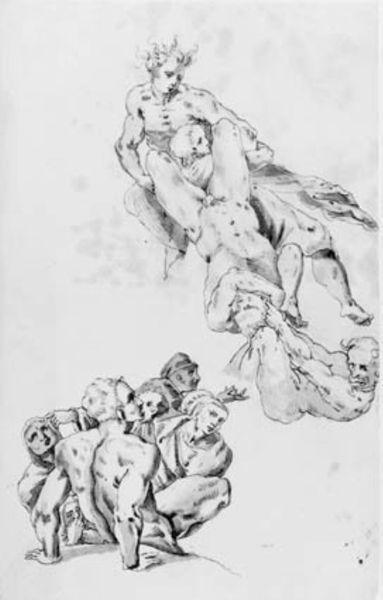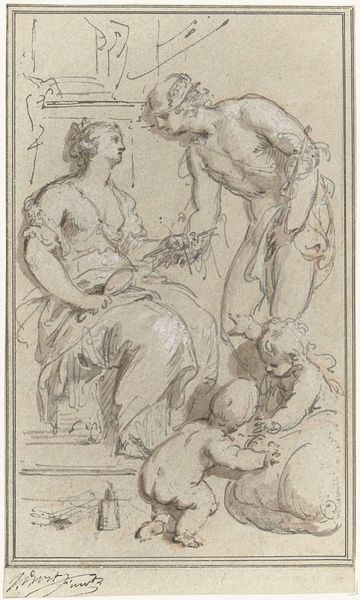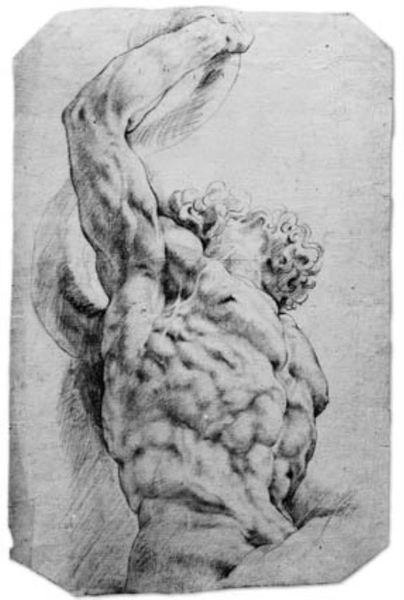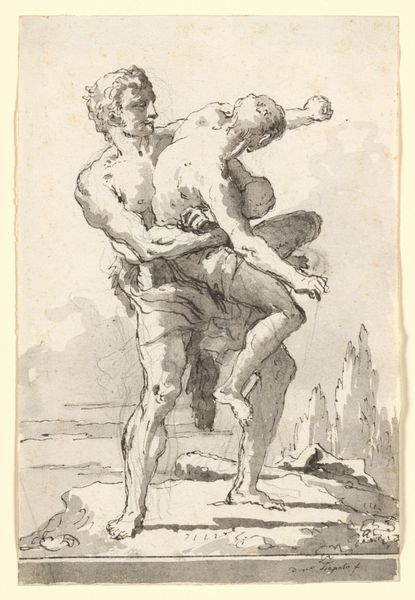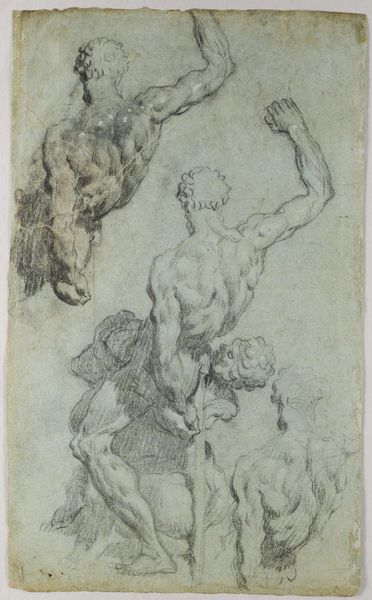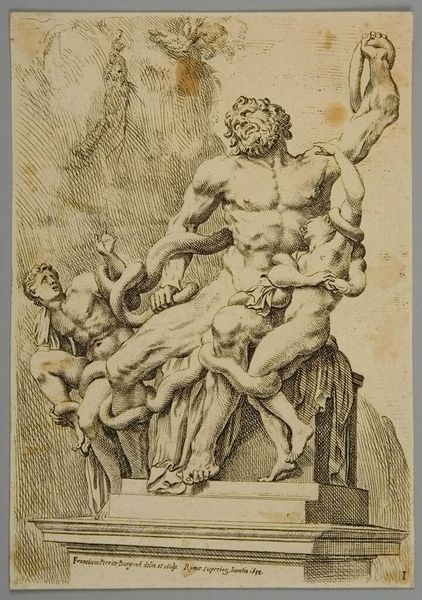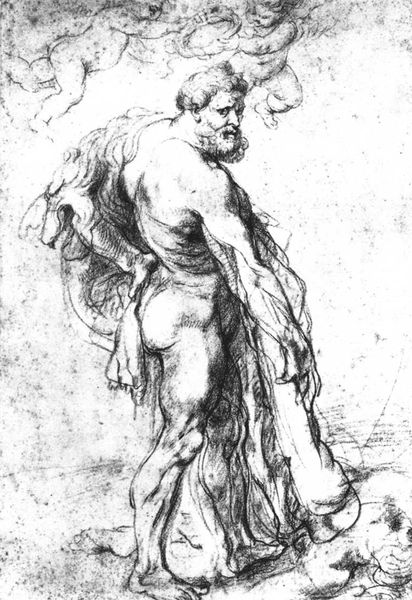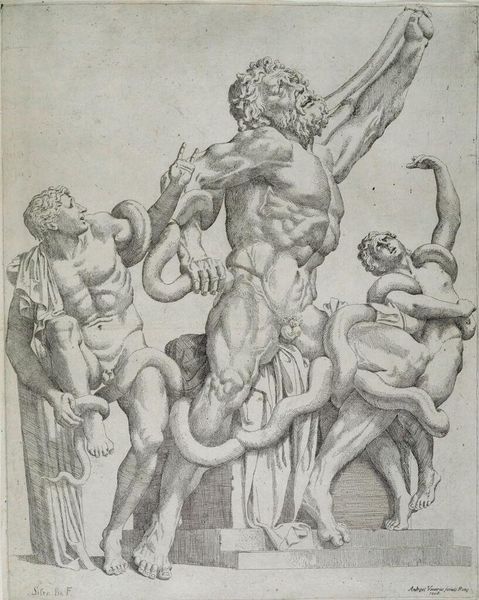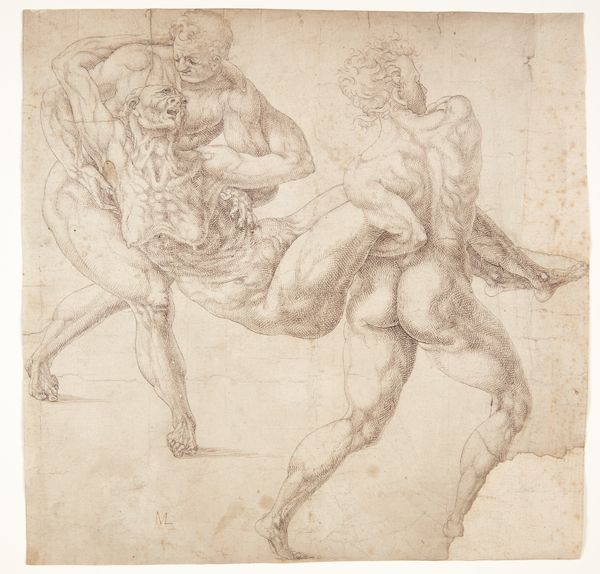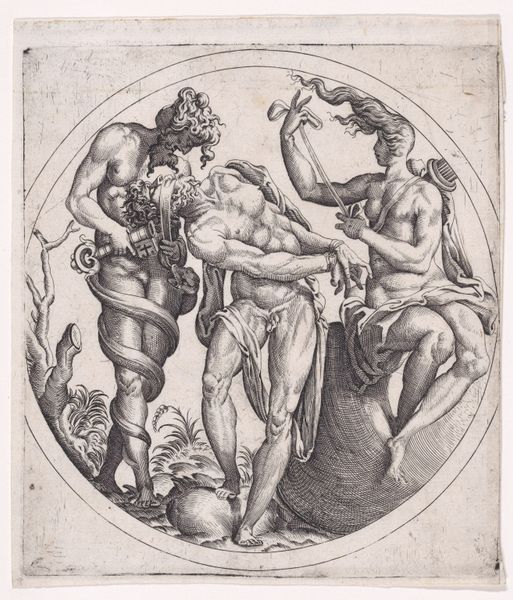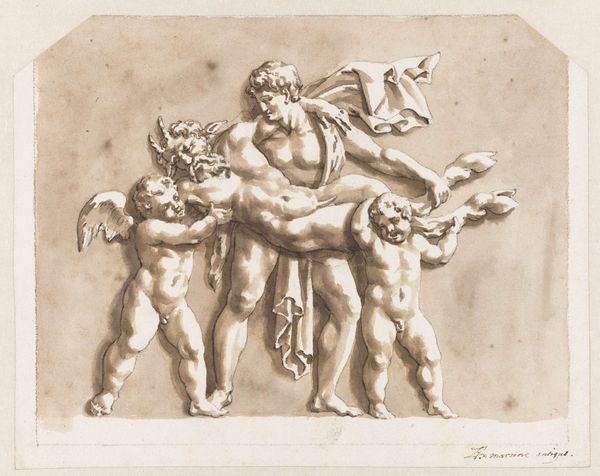
drawing
#
pencil drawn
#
drawing
#
amateur sketch
#
pencil sketch
#
incomplete sketchy
#
charcoal drawing
#
detailed observational sketch
#
limited contrast and shading
#
rough sketch
#
pencil work
#
initial sketch
Dimensions: 315 mm (height) x 197 mm (width) (bladmaal)
Editor: So, here we have an intriguing drawing from the 17th century, titled "Three male nudes from the Battle of Cascina." It's unsigned, simply attributed to 'Anonymous', done in pencil, and currently held at the SMK in Copenhagen. What I find most striking is the intensity and dynamic poses, even though it’s just a sketch. What can you tell me about the significance of this piece? Curator: Well, this drawing gives us insight into the artistic process of the time. It wasn't just about producing finished works; the preparatory sketches held value, revealing how artists studied anatomy and planned compositions, especially for large projects with political resonance. These ‘academic’ studies reflect not just the artist’s training but also the broader societal function of art as a tool for conveying power and idealizing the human form. Notice how the poses are somewhat theatrical. Why do you think that is? Editor: Perhaps to showcase the artist's skill or create a sense of drama appropriate for depicting a battle? Was the 'Battle of Cascina' a particularly important subject? Curator: Absolutely. The Battle of Cascina was intended to be depicted in the Palazzo Vecchio in Florence, and the commission itself—given to both Michelangelo and Leonardo da Vinci—was heavily laden with political implications for the Florentine Republic. These drawings become a sort of echo of that original civic aspiration. Think about the message these nudes would convey in a public space back then. Editor: Strength, civic duty, and perhaps an ideal of the male citizen soldier? Curator: Precisely. And consider the institutions that preserved these sketches: academies, private collections. They contributed to the canonization of artistic ideals and the formation of taste. Did these drawings only stay inside academies? Editor: Probably not exclusively. They would have circulated amongst artists and collectors. So a work like this sketch shows art working within very specific institutions to promote socio-political agendas. That makes sense. Thank you for making this insightful connection. Curator: Indeed! And reflecting on that connection reminds me how deeply intertwined art is with the society that produces it, both past and present.
Comments
No comments
Be the first to comment and join the conversation on the ultimate creative platform.

